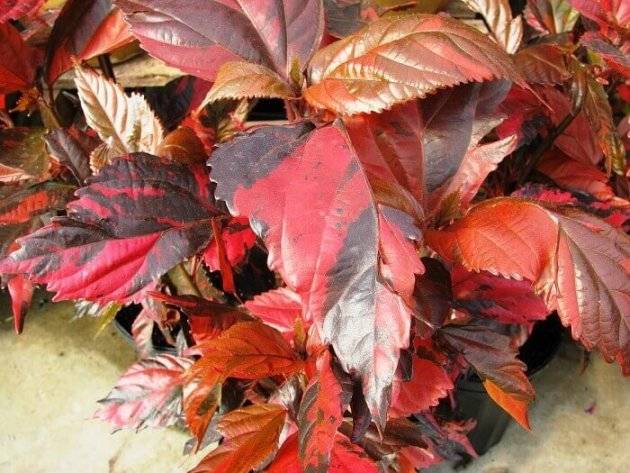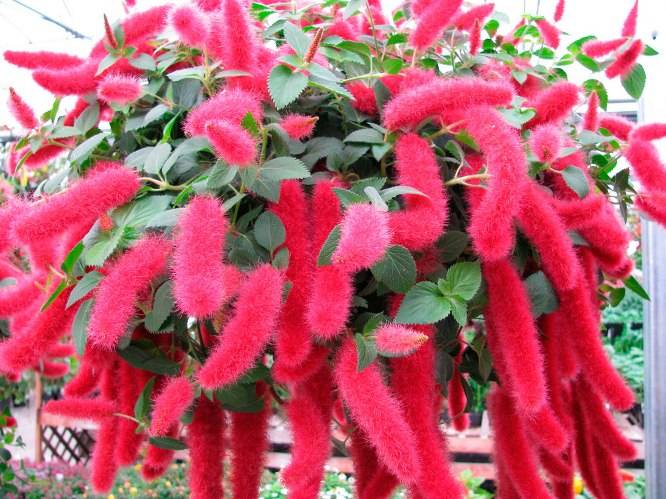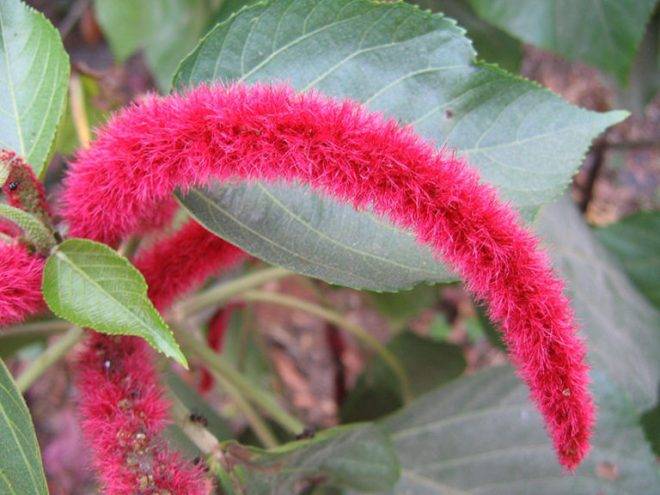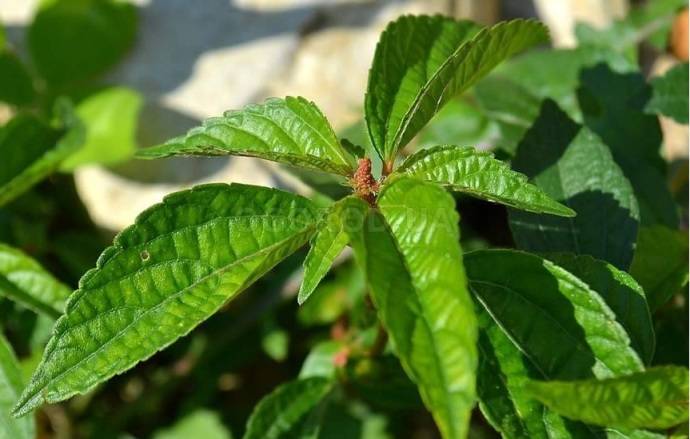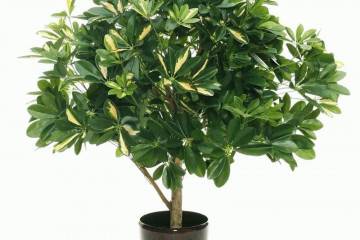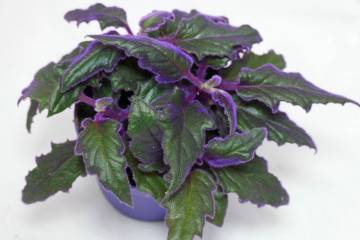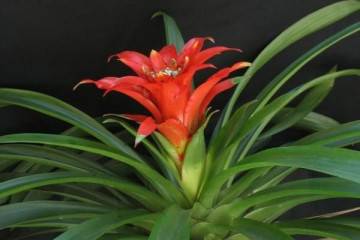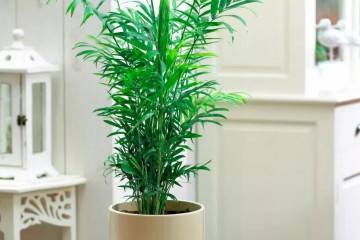Akalifa flower - home care
Content:
The plant attracts the attention of everyone who sees it for the first time. And all because instead of flowers, he has attractive ponytails. This Akalifa is a flower from the Euphorbia family, its homeland is Malaysia and New Guinea. In its natural environment, the plant is a lush shrub with beautiful inflorescences hanging down. Indoor species are decorative bushes, sometimes grown as ampelous. Taking care of a flower is easy, but interesting.
What does akalifa look like
The botanical name for the plant is Acalypha. Although more often you can hear the fox's tail, due to the inflorescences that resemble animal tails.
Akalifa fox tail is a semi-lignified shrub 50-300 cm high. The plant has flexible stems. The leaf plate is oval or lanceolate with serrated edges.
The colors of the leaves are different: from light green tones to reddish brown. Sizes up to 25 cm, and in domestic plants 10-15 cm. Small flowers are collected in fluffy crimson-red inflorescences up to 30 cm long, which smoothly fall in beautiful streams.
Plant benefits:
- cleans the air;
- normalizes positive energy;
- calms the inhabitants of the apartment;
- stabilizes electrostatics;
- regulates the amount of dangerous microflora.
Flower care
When growing a flower, you should take into account some of the nuances in care.
Temperature
The plant thrives indoors at 21–25 ° C in summer and 12–16 ° C in winter. At high temperatures, the flower loses its attractiveness. At low rates, it slows down growth, and the Akalifa gets sick.
Lighting
The flower reacts well to lighting, so it is better to place it on a western or eastern windowsill. The south window is also suitable for keeping. In this case, when the sun is active, the Akalifa is artificially shaded.
Watering
In room conditions, constant moderate watering is carried out so that the earthy clod does not dry out. In the summer, twice a week. In hot summer, it is supposed to maintain soil moisture at the same level. Winter watering is reduced to a minimum. Water when the top layer of the earth dries up.
Spraying
For flower growth, high humidity is required, which is maintained by spraying with settled water at room temperature from a sprayer. Moreover, the leaves are not affected.
Humidity
With insufficient air humidity, a flower accustomed to tropical conditions will hurt. Therefore, in hot summers, humidity is maintained artificially.
Top dressing
From the beginning of spring to late autumn, the flower is fed with complex mineral fertilizers. The procedure is performed every 2-3 weeks. Periodic feeding with organic fertilizers is encouraged: processed manure, sawdust, poultry droppings, etc.
Transfer
A useful agrotechnical measure is performed depending on the age of the flower. Young growth grows rapidly. It becomes uncomfortable for him to develop in a small pot.Therefore, every year the Akalifa is transplanted into a larger container so that the roots have room for further development. Mature plants are transplanted after 3-4 years.
Age bushes are transferred into a new pot together with an earthen clod 1 time in several years or renew the surface layer of the soil.
Dormant period
A flower grown in an apartment does not require complete rest. Only with a reduction in daylight hours, he is given a little rest: he is freed from fertilizing, watered less often and stop spraying.
When the akalifa blooms
In satisfactory conditions of existence, Akalifa blooms from March to October. To give the crown splendor and elegance, the young are pinched. The buds that appear on the upper shoots are cut off.
Pruning
Caring for akalif flower at home includes formative pruning. It is held annually in the spring. To make the bush look neat and well-groomed, the shoots are pruned by 50%.
Anti-aging pruning is performed every 3-5 years. The stems are cut, leaving 20-30 cm from the previous length. Dried tails are removed.
How Akalifa reproduces
Reproduction of akalifa is carried out in two ways.
Germinating seeds
Sowing seedlings is carried out in early spring. A light soil is selected from leafy earth and sand. A constant temperature of 20–22 ° C is maintained.
Growing seedlings is carried out under a film. In this case, the emergence of sprouts will accelerate. Saplings, which have risen to 2-3 cm, dive into a separate container. Further, the standard culture care is carried out.
Rooting cuttings
Cuttings are suitable for all varieties of akalifa. Variegated cuttings at any time of the year. A bristly hairy beauty in the spring months.
Cuttings are rooted in loose soil of sand, humus and peat, leaf and sod land. The ingredients are taken in equal volumes.
Plants take root and develop quickly. After 1.5 months from planting, pinching of the tops is required for better bushiness.
Diseases and problems
The culture can be sick and attacked by pests.
What does the appearance of the flower indicate:
- leaves turn yellow and fall off with a lack of moisture and deviations during watering;
- leaves wither and fall off - an indicator of a violation of the thermal regime;
- pale foliage - lack of nitrogen. Feeding is required;
- slow growth means a lack of micro and macronutrients or nitrogen. Fertilization is recommended;
- brown spots on the leaves - infection with fungal diseases. Spraying with fungicides is required.
Pests of akalifa: aphids, scale insects, thrips and mealybugs. Control methods - insecticides for indoor plants.
Popular varieties
The culture is represented by 450 species. More popular varieties of small stature with a shoot length of 30-70 cm.
Brief description of the species:
- akalifa bristly-haired is a perennial long-flowering plant with green leaves and burgundy panicles of inflorescences hanging down. Grown indoors, does not tolerate low temperatures and freezing;
- Akalif Vilkeza (or Wilkes) is a tall evergreen bush plant with large, slightly pubescent leaves and straight shoots. Grown as an indoor culture. Garden forms of Mosaic and Marginata plants;
- Akalifa Hispida attracts attention with inflorescences. Only female specimens are grown at home. Fur half-meter inflorescences hang imposingly among large leaves. Akalifa Hispida blooms for almost a year without taking a break for rest. Caring for the Hispida Akalifa is no different from caring for other indoor plants of these species;
- akalifa southern in nature is found on the banks of reservoirs, forests and clearings, along country roads. Inhabiting gardens and fields, it litters them. Therefore, the southern Akalifa is considered a weed.
In any case, this flower is not like others due to its inflorescences. There are a lot of varieties, so every grower will pick up something exotic for himself.
